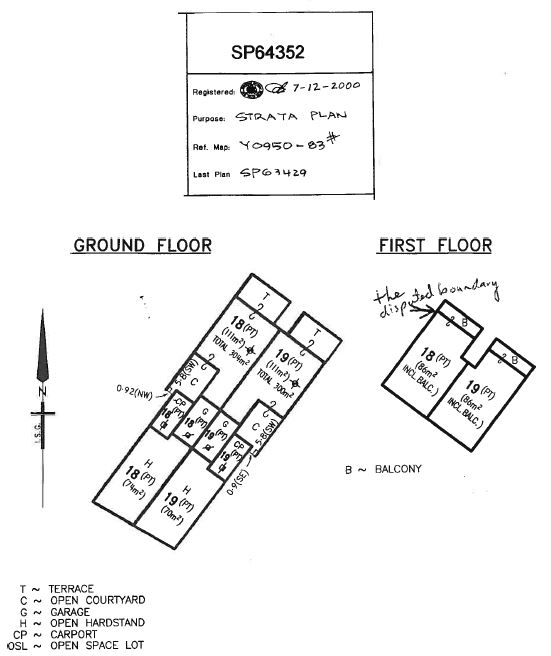The damage is obvious - water leaks soak the carpet and stain wooden floors.
Surely it is obvious that the responsibility lies with the owners corporation / body corporate to carry out the repairs to prevent the water entry?
But as Dr Anne Davis recently found out, making the owners corporation accept responsibility can be a frustrating process. She needed to take the owners corporation to the NCAT Tribunal, to obtain this order:
the Owners Corporation of SP63429 is ordered to effect all repairs to common property necessary to prevent water ingress into the main bedroom on the upper storey of Lot 18, on or before 30 May 2017
The decision is reported as Davis v The Owners – Strata Plan No 63429 [2017] NSWCATCD 7.
The facts
The complaint was that water leaked into the bedroom through the base (the sill) of the glass sliding doors which extended the whole length of the bedroom / balcony boundary on the upper storey of Villa 8 (Lot 18 SP64352) Pacific Bay Resort, Coffs Harbour.
When Dr Davis purchased the villa in 2008 she did not notice any water damage.
In 2010, she renovated the balcony by removing the timber on the balcony deck and replacing it with a compressed sheeting base, which was tiled. A waterproof membrane was applied under the sill. The work was carried out with the approval of the owners corporation, and a by-law was registered.
Between 2010 and 2013, water penetrated along the sill line every time there was an extreme weather event, and saturated the carpet.
In 2013, she requested the owners corporation to repair the glass sliding doors to prevent the water ingress and to pay the cost of replacing the damaged carpet. The owners corporation refused to accept responsibility. The complaint was taken to the Stata Titles Adjudicator, who agreed with the owners corporation. Dr Davis successfully appealed to NCAT (NSW Civil and Administrative Tribunal).
What reasons did the owners corporation give in the Tribunal to deny responsibility?
(1) It was not responsible because the glass sliding doors were not part of a boundary wall The owners corporation argued that Dr Davis had not proven that the glass sliding doors were part of a boundary wall of Lot 18, and so were not common property (for which the owners corporation was responsible to repair).
The Tribunal accepted Dr Davis’ argument that according to the registered Strata Plan, the sliding doors were positioned along a thick black line where the balcony joins the residue of the first floor cubic space. Note – a thick black line represents a boundary wall of a strata lot.
The glass sliding doors were part of a boundary wall because they separated the internal space (the bedroom) from the external space (the balcony) on the strata plan.
Conclusion: The owners corporation was responsible for the maintenance and repair of the glass sliding doors, unless it could prove that the owner had caused the problem.
(2) It was not responsible because the renovations caused the water penetration
The glass sliding doors were installed 16 years previously. They complied with building standards at the time of installation, which did not require timber frame openings to be fully membraned.
There was evidence that the likely cause of the water penetration was building movement - deflection in the timber floor joists which had twisted the door frame, resulting in gaps which led to the seals being broken which led to water ingress. The doors were due for a comprehensive service.
Did the renovations contribute? The water penetration was through the sill. The evidence was that the contractor not touched the sill and the bottom track, in carrying out the renovations.
Therefore, the renovations had not caused or contributed to the water penetration.
The Tribunal’s conclusions
On the evidence before it, the Tribunal is satisfied that the glass sliding door mounting and mechanism, the sill and tracks, are deficient and renewal and or replacement is the likely solution to prevent water penetration to Lot 18. The owners corporation is obliged under section 62 of the Strata Schemes Management Act 1996to maintain and keep common property in a state of good and serviceable repair and to renew and replace any fixtures or fittings comprised in the common property, and has not done so.
The proposed order of an amount of $11,012.00 by way of compensation for replacing her damaged carpet is refused. Section 138 of the 1996 Act does not empower the Tribunal to make such a compensatory amount.
Comments
The result would be the same under the new Strata Schemes Management Act 2015. Section 106 of the new Act is the equivalent of section 62 of the 1996 Act.
If an owners corporation desires to minimise disputes as to what is and what is not common property, and therefore clarify its responsibility, then it should adopt a common property memorandum. This guidance is from the NSW Land & Property Information website:
Section 107 of the Strata Schemes Management Act 2015 provides that the by-laws for a strata scheme may adopt a common property memorandum as prescribed by the Strata Schemes Management Regulation 2016. The Memorandum specifies whether an owner of a lot or the owners corporation is responsible for the maintenance, repair or replacement of any part of the common property.
Under the 2015 Act, there is no longer a requirement for a dispute such as this to be arbitrated. It can be taken directly to the Tribunal, although mediation is encouraged. The Tribunal may make orders for payment of compensation under the 2015 Act.

